Theoretical Modeling

KREYON will carry on a strong research activity devoted to modeling schemes mimicking the way in which novelties and innovations emerge, diffuse and eventually die.
Creative solutions, novelties and innovation share an important feature: often innovative events do not happen by chance, rather they seem to be triggered by some previous novelty or innovation. In studies of biological, technological, and cultural evolution, it has been hypothesized that one innovation can lay the groundwork for another by creating fresh opportunities. In our daily lives, a similar process may account for why one new thing so often leads to another. This idea has been beautifully summarized by the notion of adjacent possible introduced by Stuart Kauffman . Originally introduced in the framework of biology, the adjacent possible metaphor already expanded its scope to include all those things (ideas, linguistic structures, concepts, molecules, genomes, technological artefacts, etc.) that are one step away from what actually exists, and hence can arise from incremental modifications and recombination of existing material.
As stated by Steven Johnson, "The strange and beautiful truth about the adjacent possible is that its boundaries grow as one explores them".
KREYON team, in collaboration with Steven Strogatz at Cornell University, has recently introduced a new mathematical framework to investigate the processes through which creativity and innovations proceeds both at the individual and collective level. This class of models is particularly suitable to the scientific problems raised within KREYON since it considers two spaces evolving in parallel: the space of possibilities, which expands conditionally to the occurrence of novelties, and the space of actual realizations. This translates Kauffman’s idea of the expansion in the adjacent possible. I
In this context KREYON aims at raising and answering questions like: what is the structure of the adjacent possible and how does it expand? What is the role of correlations in Innovation Dynamics? Can we decouple individual and collective factors? What is the role of time-scales for the emergence of novelties and innovations?

 CONNECT
CONNECT

